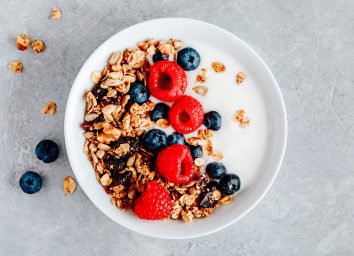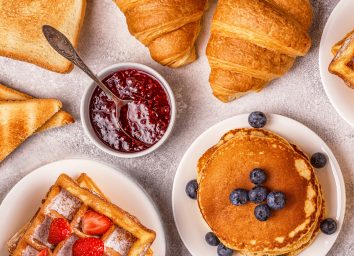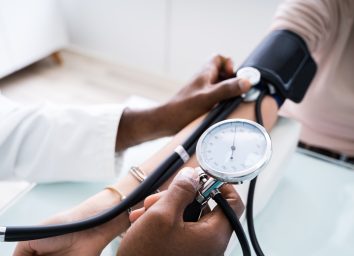Foods You Must Give Up If You Don't Want High Blood Pressure, Say Experts
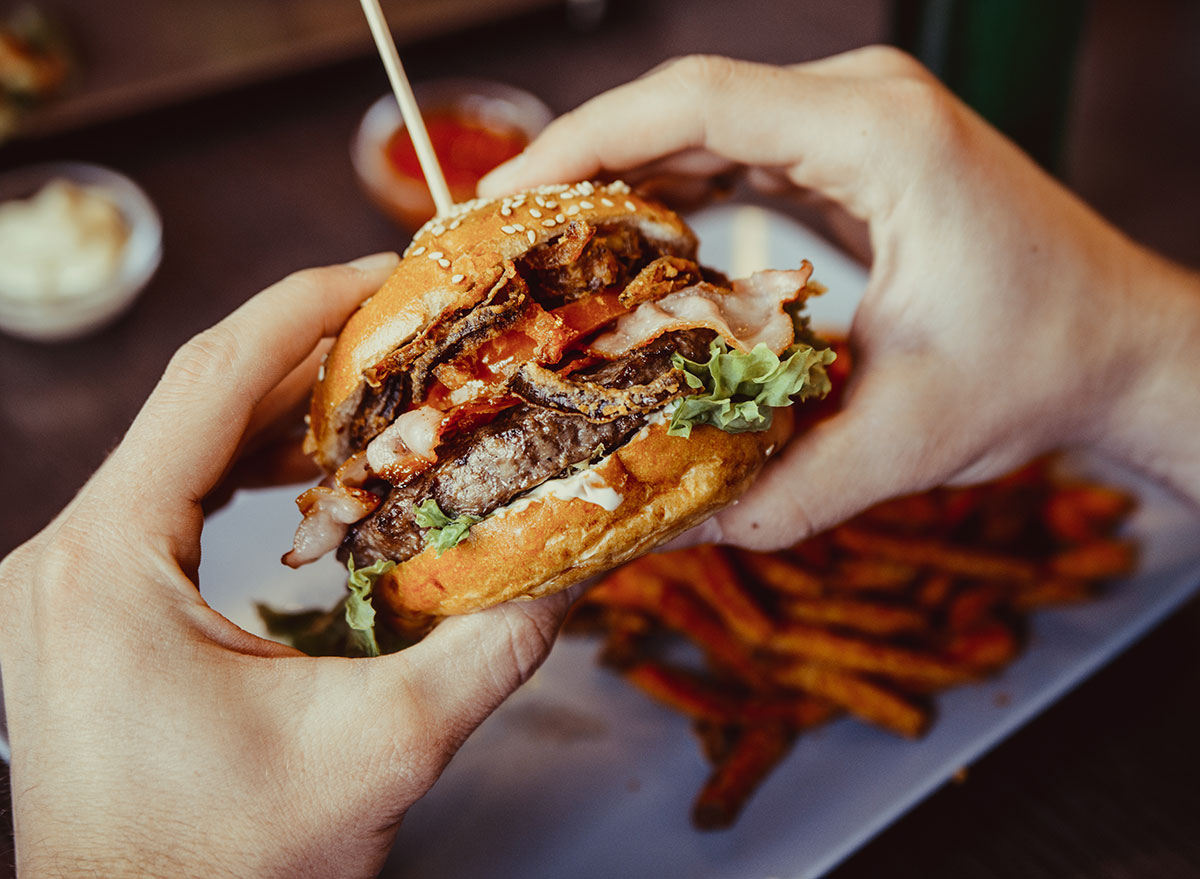
Concerned about high blood pressure? Before you toss your saltshaker over your shoulder, put it back on the kitchen table and consider this fact from the American Heart Association (AHA): More than 70 percent of the sodium we consume comes from processed, prepackaged, and restaurant foods.
So, those crystals you sprinkle on your corn on the cob really aren't the problem. It's all that sodium that's added to foods before you have a chance to say, "no thanks." You can't take out the sodium that's already put in. The best you can do if you want to avoid high blood pressure—a risk factor for heart attack and stroke—is to avoid the saltiest foods in the supermarket and restaurant. And if heart disease runs in your family, be sure to review these Heart Health Symptoms You Should Never Ignore, According to Doctors.
The AHA has created a police lineup of sorts, "The Salty Six," identifying the worst bad guys for your cardiovascular health. Read on to find out the foods you should give up (or at the very least limit) if you don't want high blood pressure, and for more on how to eat healthy, don't miss The #1 Best Juice to Drive Every Day, Says Science.
Breads and rolls
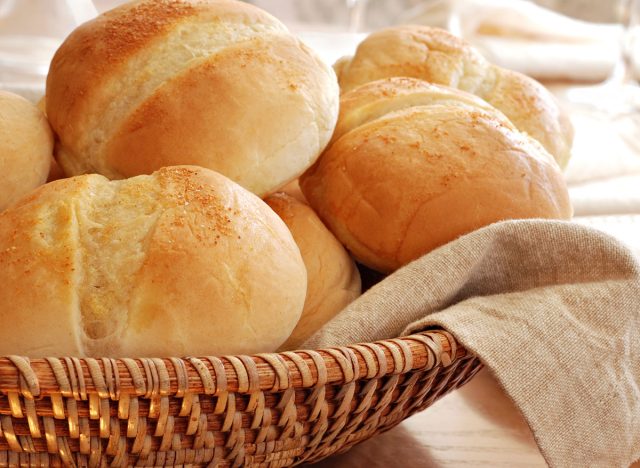
These culprits are kind of stealthy. Look at the nutrition facts on a loaf of your favorite sliced bread. You'll see it contains about 100 to 200 milligrams (mg) of sodium, which isn't a ton. (To put it in perspective, the AHA says you should cap your sodium intake to 2,300 mg per day, but ideally, you should aim for 1,500 mg—especially if you have high blood pressure.) So why do bread and rolls make the AHA's beware list?
"In the society we live in, we eat a lot of bread," explains Florida-based registered dietitian nutritionist Kim Rose, RDN. "You have dinner rolls, bagels, slices of bread, breakfast pastries—it all adds up." And, of course, there are always overachievers in the sodium department. Check out the corn muffins at Cracker Barrel. Each has 510 mg of sodium. That's nearly a quarter of the recommended 2,300 mg daily limit!
Pizza
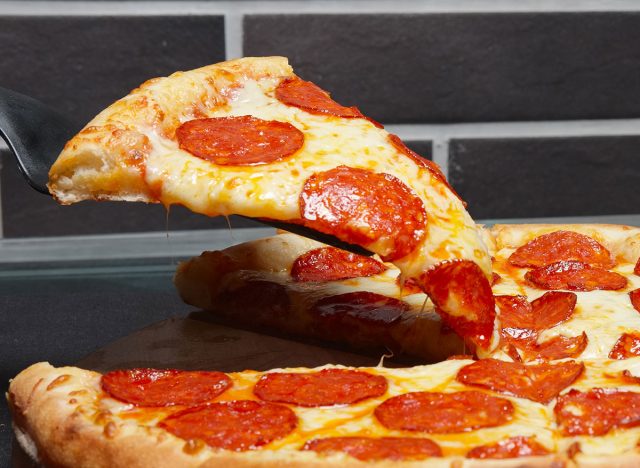
Sorry to burn your tongue. Unfortunately, your beloved pizza is among the saltiest of the six. But are you surprised? Bread, cheese, tomato sauce all contain copious amounts of sodium. But things get super salty when you start adding all the toppings like pepperoni, extra cheese, canned mushrooms, and artichokes, and so on," says Bonnie Taub-Dix, RDN, author of Read It Before You Eat It—Taking You From Label to Table.
Sandwiches (and other fast food)
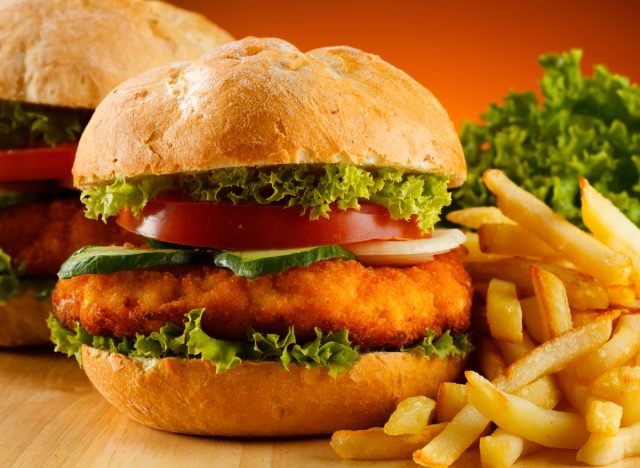
Most sub sandwiches, fast-food hamburgers, chicken sandwiches, and even veggie wraps are loaded with high blood pressure-boosting salt. In fact, it's safe to say that whenever you eat out, even when you're fine dining, you are likely to consume an unhealthy level of sodium. That's why you should strive to "make more meals at home," suggests registered dietitian nutritionist Ilana Muhlstein, RDN, author of You Can Drop It! How I Dropped 100 Pounds Enjoying Carbs, Cocktails & Chocolate—and You Can Too! "Most of the salt in our diets comes from restaurant foods," she says.
A quick search of some of your favorite restaurant meals will make that abundantly clear. For example, Boston's Market's popular chicken pot pie contains 1,780 milligrams of sodium. Think an omelet is a safe choice for breakfast? Watch out at Denny's where the Mile High Denver Omelet breakfast packs 2,360 mg.
Cold cuts (and other cured meats)
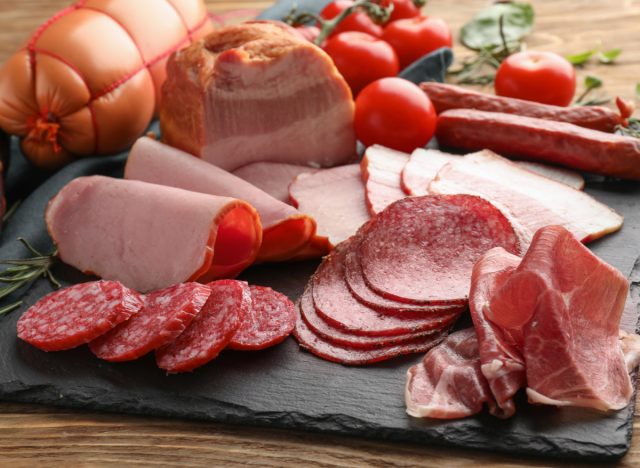
Cutting back on eating deli meats and other cured meats like bacon, ham, and sausages is one of the most effective ways to quickly reduce your sodium intake because cold cuts are the fourth-largest contributors of sodium in the U.S. diet, according to the Centers for Disease Control and Prevention (CDC). Instead, choose uncured meats and low-sodium cold cuts or fresh meats like grilled chicken. Nutritionists from Consumer Reports analyzed the sodium content of 124 packaged deli meats from many different processors and compared them to similar-sized portions of fresh meat and found that deli meats contained, on average, up to 11 times the sodium content.
Soups
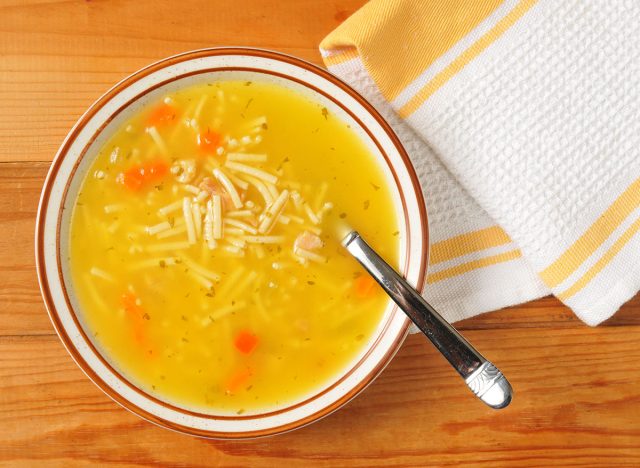
The average can of soup contains between 1,400 and 1,800 milligrams of sodium and some contain a good amount more. "Even if you stick to the serving size of half a cup, you're getting 890 mg of salt," says registered dietitian nutritionist Jana Mowrer, MPH, RD, owner of HealthWins Coaching and Consulting. "That's more than half your (recommended) sodium intake with a tiny half-cup serving!"
Another canned source of lots of sodium that may be surprising to you is canned vegetables, says dietitian Kim Rose. "Canned vegetables have fiber and minerals, but that preservation process adds sodium to avoid spoilage. Those veggies absorb that sodium bath, so rinse them off with warm running water," advises Rose. "I like to let canned vegetables sit in water for a few minutes to leach out some of that sodium."
Burritos and tacos
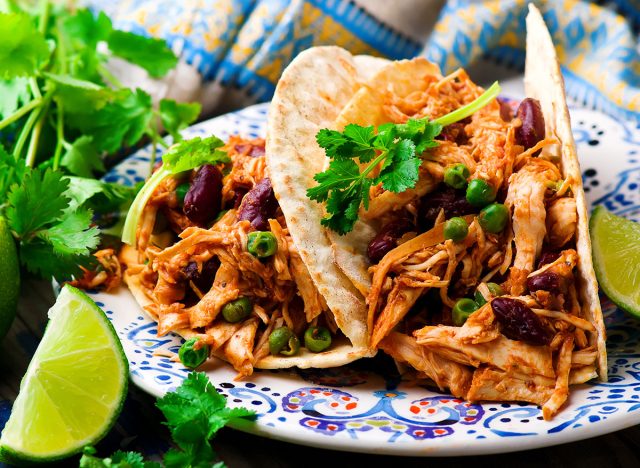
The AHA singled out these Tex-Mex staples because of their enormous popularity in restaurants and in home kitchens as quick meals. Even when made with healthy beans, restaurant burritos can easily top 1,000 mg of sodium thanks to the added cheese, salsa, and tortilla. So, giving up the bi-weekly taco run will go a long way toward limiting your exposure to blood pressure-boosting influx of sodium. "While you can't completely eradicate salt from your diet, eating potassium-rich foods like fish, avocados, bananas, and vegetables will do wonders to help limit its negative effects," suggests Gretchen San Miguel, MD, chief medical officer for Medi-Weightloss.
Now that you've added the Salty Six to your list of worst foods for hypertension, start getting more of these 20 Healthiest Foods That Lower Blood Pressure.

